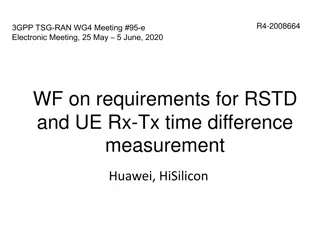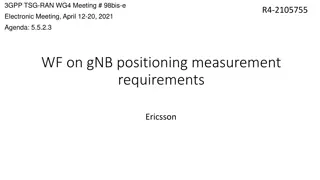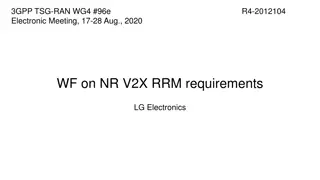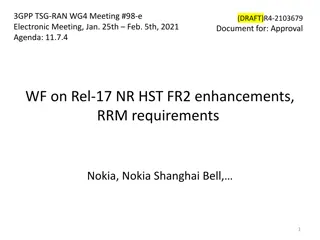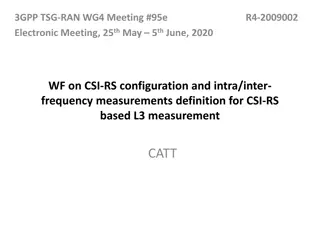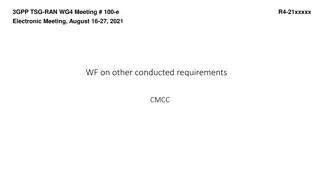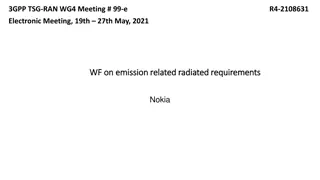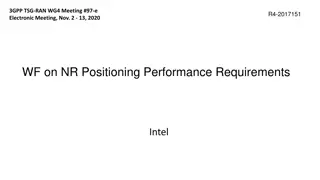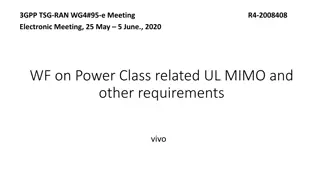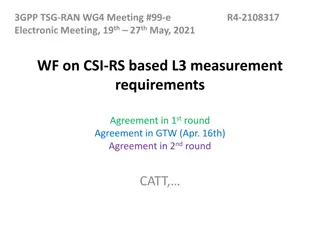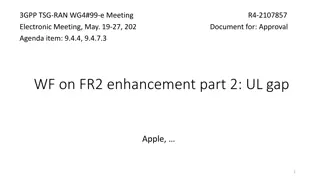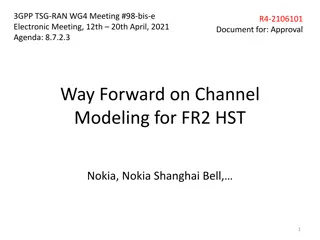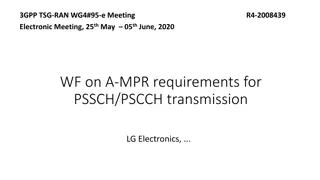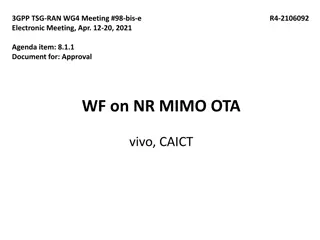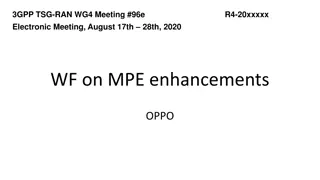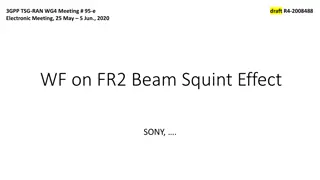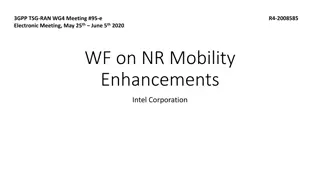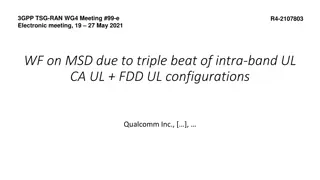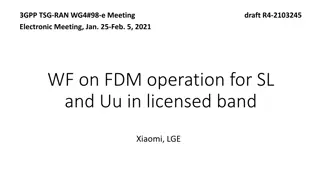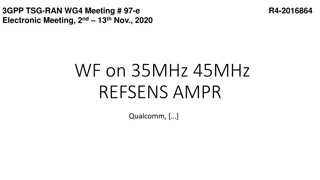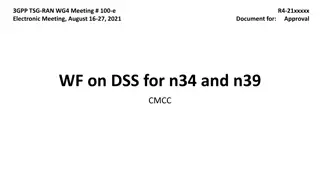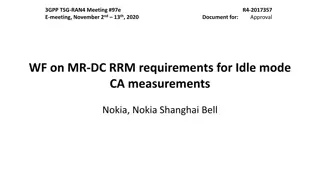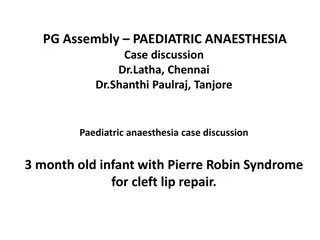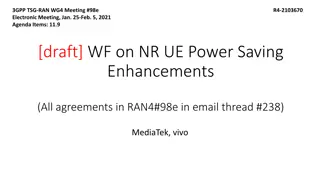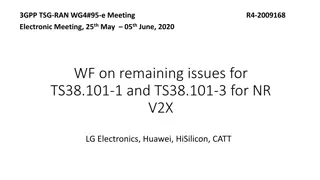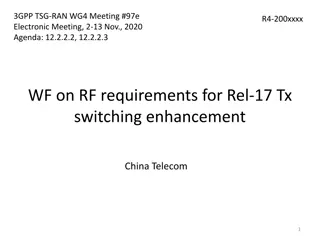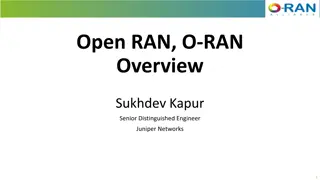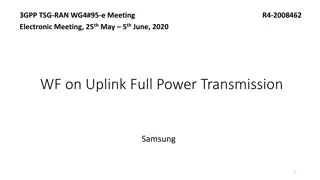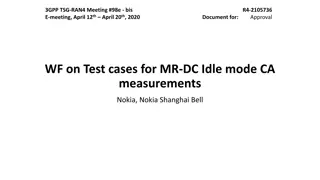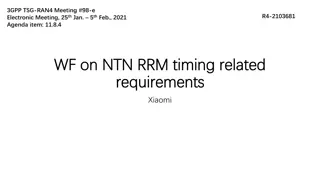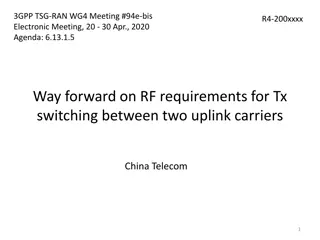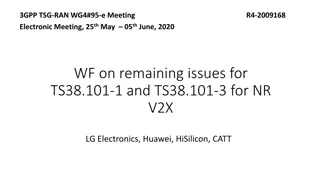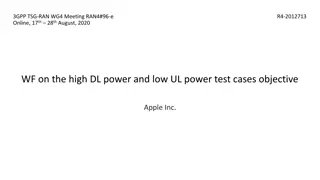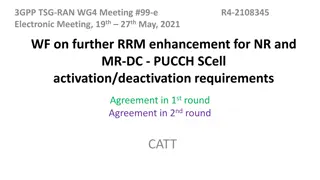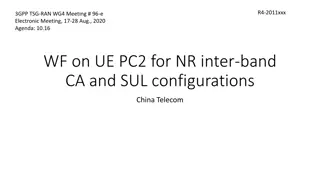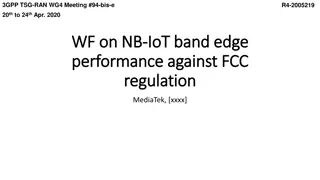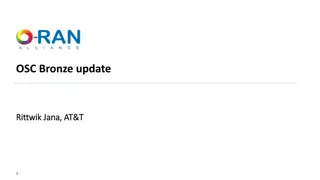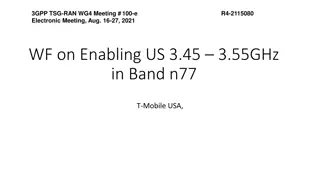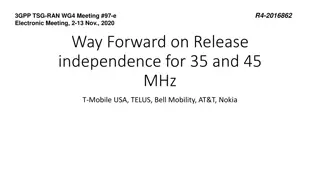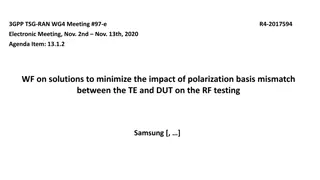Requirements for PRS RSRP Measurements in 3GPP TSG-RAN-WG4 Meeting #96-e
The presentation discusses the measurement requirements for Position Reference Signal Received Signal Strength Indicator (PRS RSRP) in 3GPP TSG-RAN-WG4 Meeting #96-e, focusing on measurement periods, capabilities, side conditions for Downlink Angle of Departure (DL-AoD), and accuracy requirements for PRS RSRP measurements. It outlines principles for defining measurement periods, capabilities, and accuracy, emphasizing sample numbers, resource repetitions, slot repetitions, and comb patterns. The content also addresses PRS RSRP measurements under cell changes and provides detailed insights into specific configurations and conditions.
Download Presentation

Please find below an Image/Link to download the presentation.
The content on the website is provided AS IS for your information and personal use only. It may not be sold, licensed, or shared on other websites without obtaining consent from the author. Download presentation by click this link. If you encounter any issues during the download, it is possible that the publisher has removed the file from their server.
E N D
Presentation Transcript
3GPP TSG-RAN WG4 Meeting #96-e Electronic Meeting, 17-28 Auguest, 2020 R4-2012133 WF on requirements for PRS-RSRP measurements Intel
Measurement period for PRS RSRP The principle to define measurement period of PRS RSRP can be: when configured with UE Rx-Tx time difference, PRS-RSRP measurement period requirements can be same as that of UE Rx-Tx time difference measurement when configured with RSTD, PRS-RSRP measurement period requirements can be same as that of RSTD measurement when not configured with either UE Rx-Tx or RSTD, measurement period requirements of RSTD can be reused for PRS-RSRP measurement. Notes: The exact number of required samples for a successful PRS-RSRP measurement report can be same as that of for RSTD or UE Rx-Tx. If any issues identified for this number during the performance part (e.g. the lager number is needed to grantee the correct PRS RSRP measurement) RAN4 can revise this number absolutely.
Measurement capability RAN4 not to define measurement capability in terms of number of PRS layers, TRPs, resource sets and resources that UE shall be able to measure [Moderator Notes: According to the majorities view, the minimum capability for PRS RSRP report can be covered by RAN1 s capability defined. ]
Side condition For DL-AoD, the side condition of PRS RSRP can be specified Option 1: Serving cell/TRP side conditions need to be specified as Option 1-1: -6 dB Option 1-2. -3 dB Option 2: For the reference cell/TRPs and neighbour cell/TRPs Same as that for the reference cell in PRS-RSTD Option 3 :for neighbor cell/TRPs ONLY.
Measurement accuracy requirements for PRS RSRP Number of samples for PRS RSRP measurement accuracy: Option 1: 1 sample including resource repetitions within the PRS occasion Option 2: depends on the number of slot repetitions (note: two closest repetitions within the same PRS period can be separated by up to 32 slots), and the number of comb patterns per slot Types of requirements Option 1: Define absolute accuracy requirements ONLY Option 2: Define relative accuracy requirements ONLY Option 3: Define both absolute and relative accuracy requirements
PRS RSRP measurement under cell change When configured together with UE Rx-Tx, the UE behavior rules for PRS-RSRP are the same as for these for UE Rx-Tx (agreed in [R4-1915854]) When configured together with RSTD, the UE behavior rules for PRS-RSPR measurement under cell change are the same as for RSTD (the rules for RSTD were agreed in [R4- 1915854]): The UE shall continue RSTD measurement after each serving cell change for: intra-frequency handover, inter-frequency handover. When not configured together with either UE Rx-Tx or RSTD, the UE behavior rules for PRS-RSPR measurement under cell change are the same as for RSTD (the rules for RSTD were agreed in [R4-1915854]).


